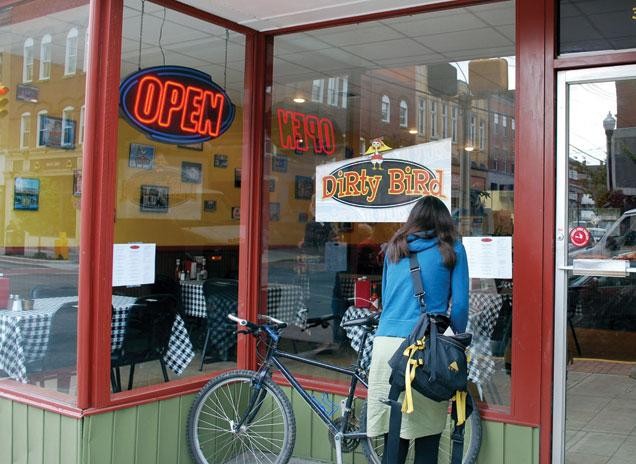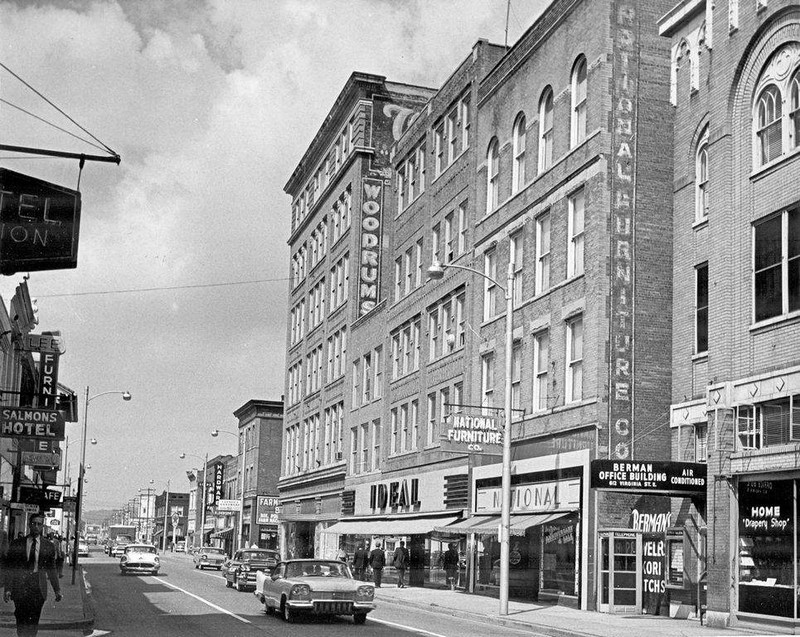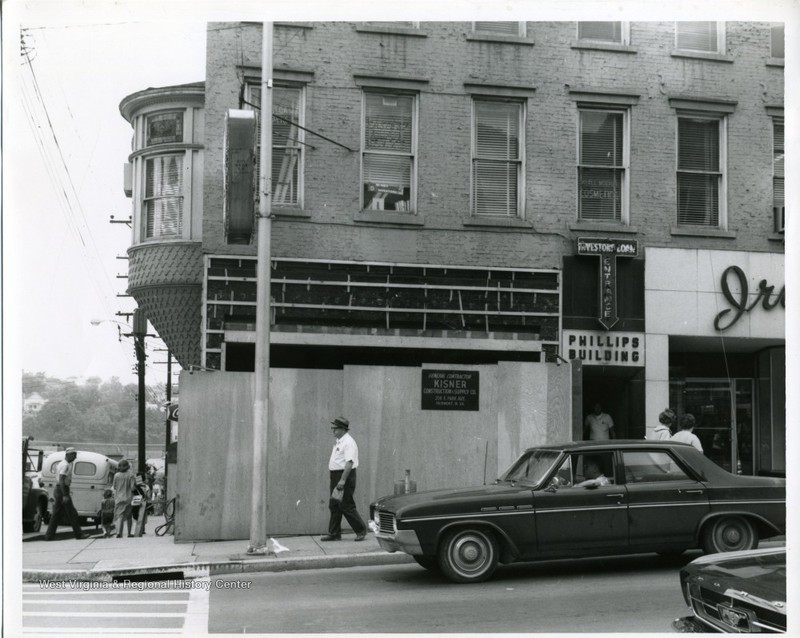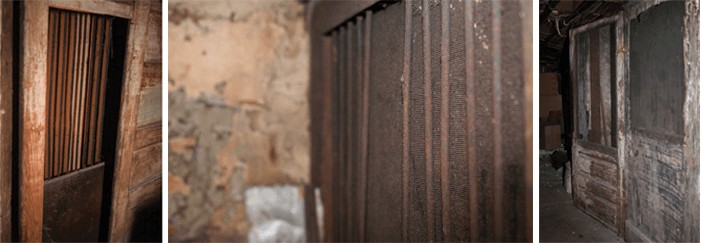The Berman Building
Introduction
Text-to-speech Audio
Images
This is the current day store front of the historic building.

The Berman Building 1960

The building undergoing construction in 1966.

Photos of the jail cell


Backstory and Context
Text-to-speech Audio
Now identified as the Berman Building, this antebellum construction built in 1852 houses a preserved Civil War prison in the cellar. The Berman Building has been home to many businesses: a bank, clothing store, and restaurants, but the true secret of this building hides below the surface. The Confederate soldiers held in this small prison were most likely taken from the Jones-Imboden Raid, the largest Civil War battle in present day northern West Virginia.
Confederate cavalry under General William “Grumble” Jones raided Morgantown on April 29, 1863 after fighting battles in Hardy and Preston counties five days prior. The Jones-Imboden Raid was extremely destructive as the soldiers exploded railroad bridges and libraries, and set fire to wells, boats, tanks, and other equipment. The citizens of Morgantown hid their prized possessions, personal belongings, and livestock in hopes that they would not be taken or destroyed during the raid.
"Every store in town was robbed of everything the thieves fancied. The home rebels pointed out the private property they wanted destroyed, and it was done. A valuable stem saw mill, belonging to J. N. Cromwell & Co., was burned. The National printing office was destroyed because it has been uncompromisingly Union, while the butternut concern in Morgantown was uninjured because, as the traitors said, it was on their side and was devoted to their cause. The law and private libraries of Gov. Peirpoint were carried into the street in front of his office and burned; every horse in town and the surrounding country was taken. At least five hundred horses were taken out of Marion county alone." - The Wheeling Daily Intelligencer, May 5, 18631
It is unknown as to why there was a small jail cell in the basement of this commercial building, but local historians believe that it was used as an auxiliary location. A theory is that the local jail cells at the court house were either too full or too obvious and the Confederate captives could easily be freed from that location. Today little remains of the Civil War era cell, and it is not open to the public. Morgantown Magazine was allowed access to the basement in 2014, and said that the one wooden structure and metal bars are only visible with assistance from a flashlight. Most restaurant customers are completely unaware of the history that is below them, as there is no historical marker to represent the jail cell.2
Sources
1. “Confederates Capture Fairmont.” Accessed September 2, 2016. http://www.wvculture.org/history/civilwar/fairmont02.html. 2. “Underground Morgantown.” October 6, 2014. Accessed September 2, 2016. http://www.morgantownmag.com/morgantown/October-November-2014/Underground-Morgantown/. 3.“National Park Services.” Last Modified 05/02/1996, http://pdfhost.focus.nps.gov/docs/NRHP/Text/96000441.pdf 4. “Morgantown - Morgantown - WV - US.” 2014. Accessed September 2, 2016. http://www.historicalmarkerproject.com/markers/HM1E5F_morgantown_Morgantown-WV.html.
"Construction on the Corner of High and Walnut Streets, Morgantown, W. Va.," West Virginia History OnView, West Virginia and Regional History Center, WVU Libraries. https://wvhistoryonview.org/catalog/011658
